
HartRAO Home > news > Rhodes University Centenary visit 2004/08/14
To celebrate the Centenary of Rhodes University, Justin Jonas, who is both Director of HartRAO and Head of the Department of Physics and Electronics at Rhodes set up a visit to the Observatory for old Rhodians. The pictures below show what followed.

The day began with lunch in the Visitors Centre. The visitors were asked to behave like ten year olds and enjoy themselves with all the 'toys' in and around the VC. Here Mike Gaylard helps them get to grips with gyroscopic forces.
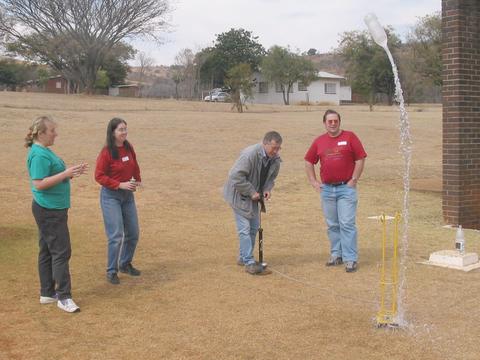
Rocket launching is always popular!
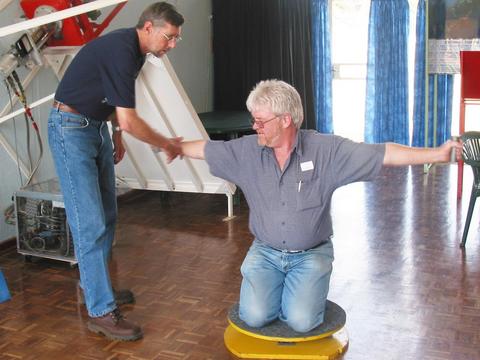
What does happen when a giant star collapses?

And just where are we now?
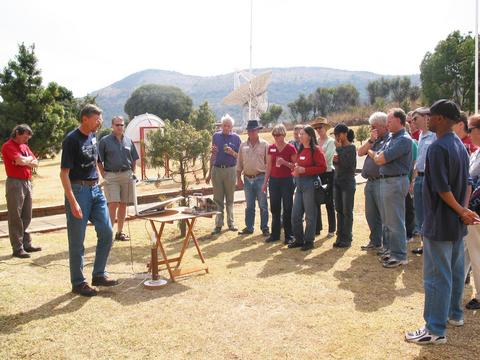
Mike Gaylard shows that a satellite dish is really a baby radio telescope, and uses it measure the temperature of the Sun.

Justin Jonas uses the mockup radio telescope on the wall in the VC, made from parts off the real telescope, to explain how it all works.
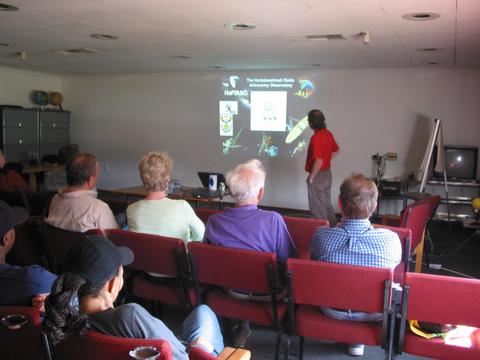
Director Justin Jonas gave an entertaining presentation on Rhodes, the Observatory, and Radio Astronomy. Here he does look a little perplexed as to how he got himself into all this.
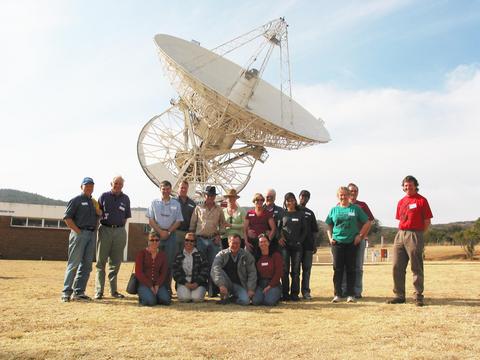
The assembled group in front of the radio telescope.

And the same with a slight change of cast.
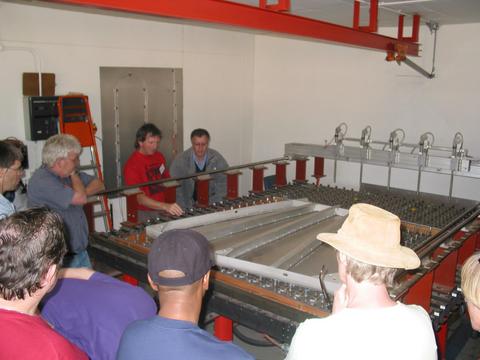
The complete main surface of 252 panels has been replaced over the last few years, and this is where it was done. This is the "bed of bolts" used to form the two-dimensional parabolic shape of each panel. One of the spare panels lies on the bed.
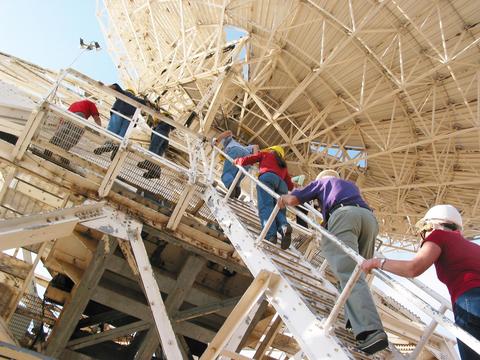
The group were able to climb part of the way up the telescope.
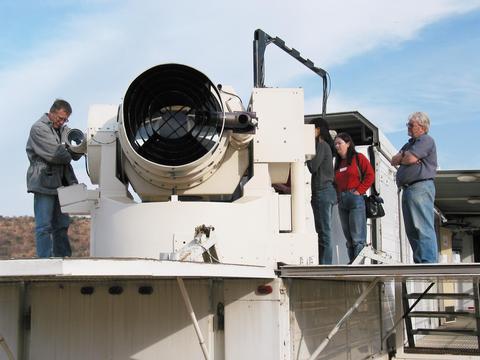
Johan Bernhardt gave the group a close look at the satellite laser ranger in a gap between satellite passes.
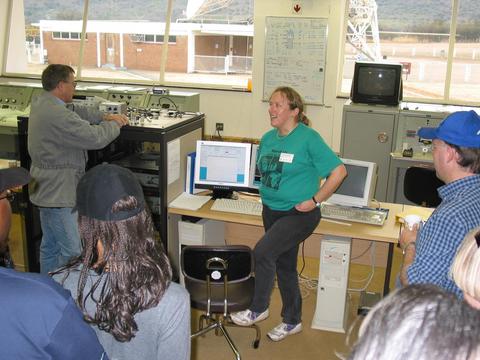
Sarah Buchner, a HartRAO staff member who is also a PhD student at Rhodes, explained the computer control system for the telescope, and how we use it to observe pulsars, which are the dense remains of stars that have collapsed to some 20km in diameter.
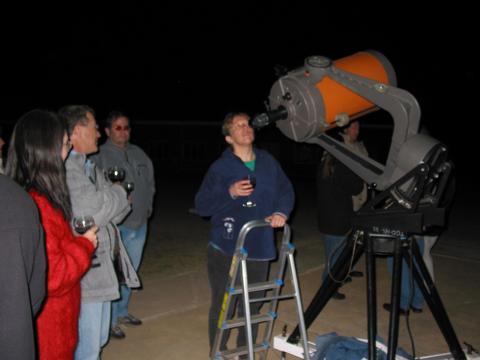
As dusk fell, attention turned to the night sky. As we started observing Jupiter, low in the western sky, the International Space Station flew over. Appropriate liquid refreshment aided the enjoyment.
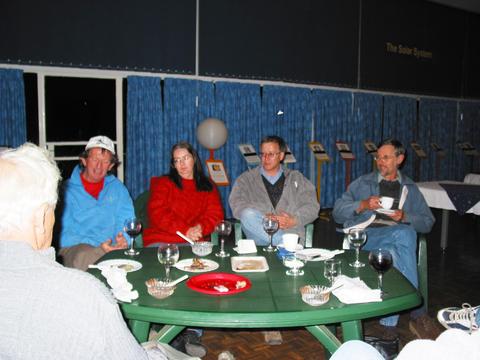
A braai and supper in the Visitors Centre closed the evening. Mike, on the right, has to drive home and is soberly drinking coffee. Justin, on the left, only has to walk 20m to get home, and has a different class of liquid refreshment to hand.